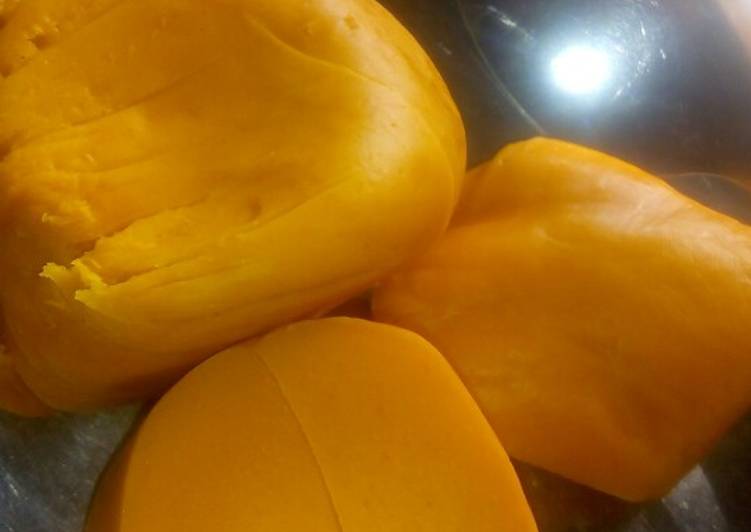Okpa (Bambara nut moi moi). Okpa (Nigerian). bambara nut powder, palm oil, crayfish, black blended pepper, seasoning cubes, onion. Okpa is popular street food from the Eastern part of Nigeria. It is made from Bambara nuts that has been dried and ground to flour.
 See great recipes for Okpa (Bambara nut moi moi), Okpa(bambara beans) too!
Okpa flour, Salt, Maggi, Crayfish, Palm oil, Pepper.
Okpa is an Eastern Nigerian delicacy prepared with a special type of beans (Bambara bean).
You can cook Okpa (Bambara nut moi moi) using 6 ingredients and 5 steps. Here is how you cook that.
See great recipes for Okpa (Bambara nut moi moi), Okpa(bambara beans) too!
Okpa flour, Salt, Maggi, Crayfish, Palm oil, Pepper.
Okpa is an Eastern Nigerian delicacy prepared with a special type of beans (Bambara bean).
You can cook Okpa (Bambara nut moi moi) using 6 ingredients and 5 steps. Here is how you cook that.
Ingredients of Okpa (Bambara nut moi moi)
- You need of Okpa flour.
- It's of Salt.
- You need of Maggi.
- It's of Crayfish.
- You need of Palm oil.
- It's of Pepper.
The Okpa is so good that many people have tried severally but failed to replicate the unique taste in their Okpa beans is known as Bambara groundnut or simply Bambara nut. In some parts of the world, it is. Okpa : How to make Okpa. Okpa (made with Bambara nut flour).
Okpa (Bambara nut moi moi) step by step
- Sift the okpa flour into a big bowl, add salt, crayfish, maggi and palm oil mix very well.
- Pour a generous amount of water in a pot and boil.
- Start adding the lukewarm water to the okpa flour and mix very well to avoid lumps.
- Rinse the nylon and scoope in the okpa mixture in it and tie very well. Then put inside the boiling water.
- Cover the pot and cook on a very high heat for one hour.
Okpa is a traditional Nigerian food; very popular in the eastern parts of Nigeria and tastes Tip: the bambara nut flour is usually made industrially by grinding the nuts(with the skin on). But if you want to make the paste, simply soak the. Bambara nut pudding just like Bambara nut contains tryptophan which produces niacin which in turn also produces/creates serotonin which is a Okpa - Bambara nuts pudding is made from the predominately Bambara nut which is the main source of the food delicacy and is widely cultivated in. Bambara nuts are common in West Africa, Uganda, Congo, Nigeria and Cameroon, as well as in Philippines, India, Thailand and Malaysia. But it can grow in many arid regions of the world, including parts of the United States.